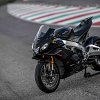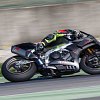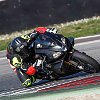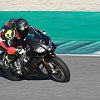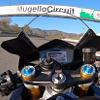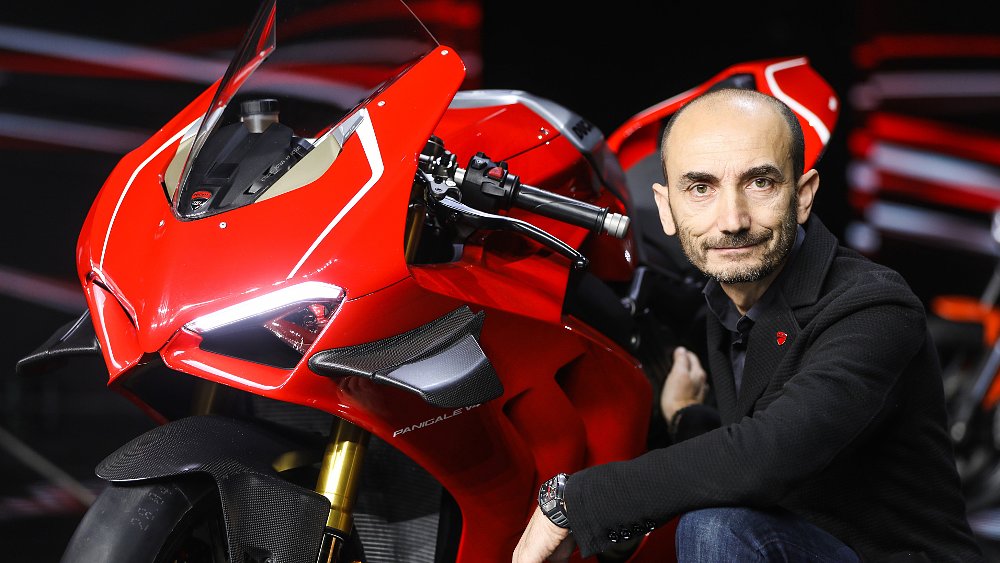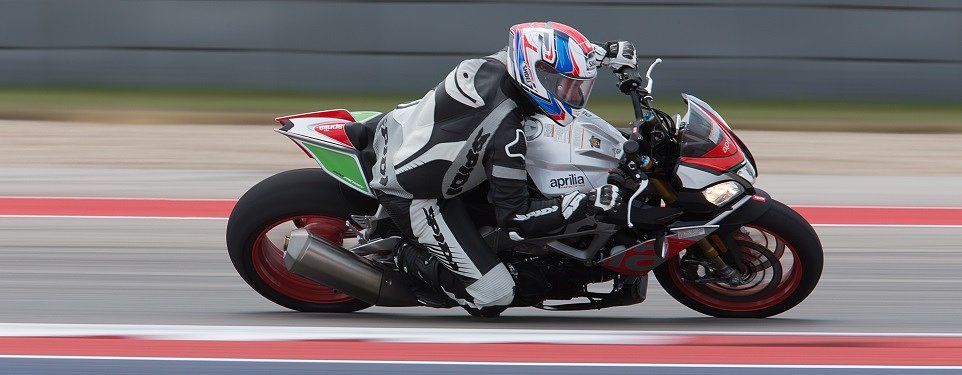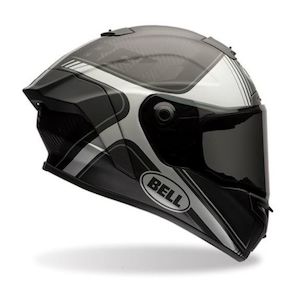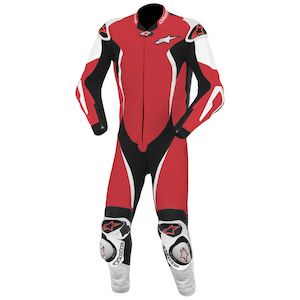It’s early afternoon in Tuscany, which means it’s the middle of the night back home in Los Angeles. At this same time the day before, jet lag was in full effect and the only thing keeping me conscious was espresso. Today however, I am wide awake and functioning on a stimulant more potent than caffeine: adrenaline.
The adrenaline is from holding the throttle on the new Aprilia RSV4 1100 Factory wide freaking open down Autodromo del Mugello’s three-quarter-mile front straight, putting an indicated 309 kph (192 mph) on the dash before my bravery wavers and I sit up to brake.

Twisting the throttle on the RSV4 has been a thrill since Aprilia first introduced the superbike back in 2009, but this time around it’s even more exciting. For one, I’m at Mugello, arguably the finest circuit in all of Europe, and second I’m experiencing this technical 3.2-mile track on Aprilia’s latest and greatest, a bike that Fabio Ghilardenghi, Aprilia’s press officer, describes as “the fastest, lightest, and most powerful RSV4 ever.”

Fabio isn’t exaggerating. This new machine is making a claimed 217 horsepower by way of a bigger, retuned 1,078 cc (up from 999 cc) V-4 engine, and it weighs some 11 pounds less, thanks in part to a lithium-ion battery, titanium-skinned muffler, and a few carbon fiber bodywork bits. Other updates for 2019 include cooler-running and lighter Brembo Stylema front calipers with more aggressive pads, updated damping schedules in the fork, slightly revised front-end geometry and a stiffer swingarm, a new black paint scheme, and aerodynamic “winglets” to mimic the RS-GP MotoGP machine. That’s all on top of standard Factory features like an Öhlins NIX fork and TTX shock, forged-aluminum wheels, and the latest-generation APRC rider aids. The specification of this bike is impressive, which is what you’d expect for a motorcycle wearing a $24,999 price tag.

Climbing on the RSV4, you’re met with the same compact ergonomics the bike has always had. The clip-ons are low, the seat is moderately high, and the tank sides are concave in a way that makes latching onto the chassis with your knees especially easy. I’ve always considered the RSV4 a perfect fit for my five-foot, 10-inch frame and ergonomic preferences, so the familiar arrangement is appreciated.

Riding the Aprilia RSV4 Factory at Mugello
Press the starter and the Euro-5-compliant Akrapovic muffler emits a bark as distinctive as Mugello’s red, white and green curbing. Santo cielo this engine sounds good! This latest 65-degree V-4 motor gains 79 cc via larger 81 mm pistons similar to those used on the Tuono 1100 naked bike. The RSV4 also utilizes the Tuono’s taller fifth and sixth gear ratios, but that’s where the similarities end. Everything from the crankshaft to the machined piston crowns and combustion chambers is different on the RSV4, tailored to optimize arm-stretching, pupil-dilating performance. Compared to the 999 cc RSV4 RR that accompanies the 1100 in the 2019 lineup, the new motor boasts a 10 percent advantage in terms of horsepower and torque from idle on up to the new, 600 rpm lower 13,600 rpm rev limit.

Out on the track, the added grunt equates to immediate thrust and a relaxed, unstressed engine feel. Floundering around during the first of four 20-minute track sessions, it quickly becomes evident that I’m shifting too much, dropping a gear entering corners because I anticipate needing revs to pull me away from the apex. Wrong assumption. Even though the bi-directional quickshifter works seamlessly, it’s better to stay in a higher gear and let the V-4’s torque catapult you out of corners. This engine is a brute, and opening the throttle sends a flood of smooth thrust to the ground no matter what speed the crank is spinning. Power is linear, instant and abundant, paired to soundtrack that makes other superbike engines sound bland or whiny.
Arcing onto Mugello’s front straight for the first time, I light the fuse. The RSV4 throws triple digits onto the dash as effortlessly as the Hulk throws a car, and by the time I reach the start-finish line I’m in sixth gear with the metric equivalent of 180 mph on the dash. At that speed, the wings bolted to the Factory’s flanks are putting about 18 pounds of downforce on the front of the bike, which is supposed to improve stability and reduce wheelies. That suggests that the small wheelie the bike did over the rise at the end of the straight — at about 190 mph! — would have been more dramatic without wings. Do the winglets make a noticeable difference? Heck if I know. I wasn’t able to ride the 1100 back to back with a 1000, so it’s impossible to tell. What I can tell you is that while my Bell Pro Star was being shaken like a bobblehead every time I went into hyperspace, the bike sliced cleanly through the air and ran straight and true without a hint of wobble or wiggle.

For my second session out I’ve absorbed a bit of the track and have more confidence regarding where to put the bike in each corner. Mugello’s curbs are painted with grippy FIM-spec paint, and even if my lines don’t demand that I apex across a curb or ride out onto the candy stripes at exit, I do it simply because I can. It just feels like the right thing to do. As with many European tracks, Mugello’s corners are named. Through sweeping third-gear bends like Arrabbiata 1 and Correntaio, the bike feels wonderfully stable at full lean and edge-of-the-tire power slides are smooth and controlled, but pouring on the gas at lesser lean angles sets in motion a rear-end pump that can make corner exits more exciting than they ought to be.
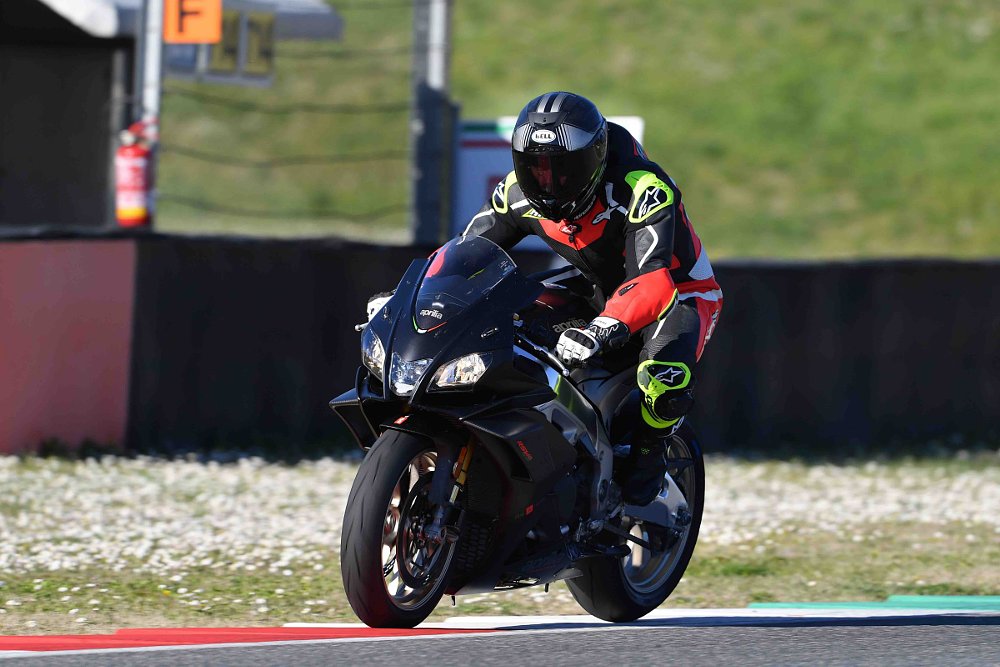
Likewise, the bike’s handling in situations that demand a rapid transition — places where you want to slap the bike from one side of the tire to the other, such as turning from Materassi into Borgo San Lorenzo, Scarperia into Palagio, and especially Biondetti — leave something to be desired. The steering is high effort, and while you can muscle the bike over with body language, the chassis wants to be eased down to full lean or else it wallows. Wider clip-ons and some rear ride height would likely quicken steering and I’m confident more chassis composure can be found within the bike’s fully adjustable suspension, but with limited time and limited communication ability with my Italian bike handler, I wasn’t able to experiment much.

My only other gripe about the RSV4 pertains to the brake feel. They’re the latest Brembos and they squeeze discs the size of dinner plates (and they’re even fitted with $200 accessory air scoops to help keep them cool), but the bite isn’t as strong and the feedback isn’t as abundant as you’d expect from such high-end equipment. Like the language barrier between me and my mechanic, an amount of understanding is lost in translation between the brake lever and the pads. There’s plenty of stopping power, no doubt about that, but extracting it requires relying on faith rather than acting in confidence, and that limited my assertiveness peeling toward apexes.

As the afternoon light begins to cast shadows across the track, I’m finally feeling like I have the majority of Mugello’s 14 turns figured out. It’s a truly special and beautiful place to ride a motorcycle, and the exhilaration of rolling the Aprilia’s loud stick open never diminishes. It’s got so much power and dishes it out so effortlessly. I just wish I had more time to enjoy it, and maybe a bit more refinement from the chassis and brakes.

Every bike has its deficits, and if I’m being nit-picky about the new 1100 Factory it’s only because I hold the RSV4 in such high regard. It’s been one of my top-three superbikes since I first rode the original in early 2010 (and the Tuono became my favorite naked bike when the 1100 came out in 2015), and every version has offered appreciable improvements. For 2019 the update is all about unprecedented amounts of tire-torturing power and some sexy MotoGP tech. So if you’ve got 25 grand burning a hole in your pocket and want to swing the biggest stick at track days and bike nights, the RSV4 1100 Factory is for you. For those who aren’t as flush with cash or prefer a race-legal displacement, the 999 cc RSV4 RR is available for $17,499 and can be updated with any of the Factory’s componentry (except the engine) via accessory kits.

Back in L.A., my adrenal glands squeezed dry, jet lag and exhaustion have me in their grip. I’m looking forward to some deep sleep, and I know that when I dream, I’ll hear the sound of that incredible V-4 echoing off the garage doors and grandstands of Mugello. I just hope the dreams aren’t so real that they wake me up.
| 2019 Aprilia RSV4 1100 Factory | |
|---|---|
| Price (MSRP) | $24,999 |
| Engine type | 65-degree, liquid-cooled V-4, four valves per cylinder |
| Displacement | 1,078 cc |
| Bore x stroke | 81 mm x 52.3 mm |
| Compression ratio | 13.6:1 |
| Power/torque | 217 horsepower @ 13,200 rpm / 90 foot-pounds @ 11,000 rpm |
| Transmission | Six gears, bi-directional quickshifter |
| Front suspension | Fully adjustable 43 mm inverted Öhlins NIX fork with TIN coating |
| Rear suspension | Fully adjustable Öhlins TTX monoshock |
| Front brake | Twin 330 mm discs, Brembo Stylema four-piston radially mounted monoblock calipers |
| Rear brake | Single 220 mm disc, two-piston Brembo caliper |
| Tires front/rear | 120/70ZR17; 200/55ZR17 |
| Steering head angle/trail | 24.5 degrees/4.1 inches |
| Wheelbase | 56.7 inches |
| Seat height | 33.5 inches |
| Wet weight | 439 pounds |





